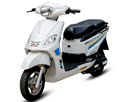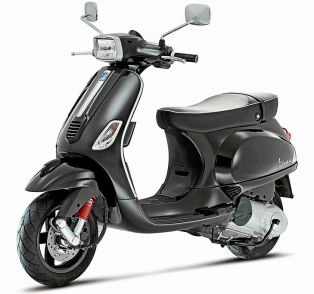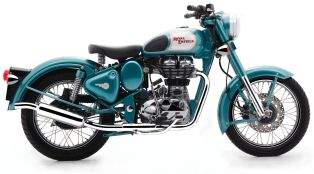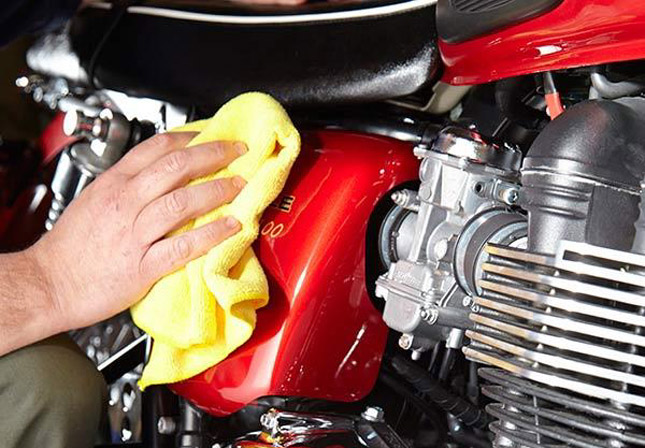 Getting your bike serviced regularly is one way to maintain your beloved motorcycle so that it not only last longer but also remains reliable for your daily commute and long journeys. But only a true biker can understand the joy of playing with its toy when it is stand still. Pampering you machine with either new performance parts or simply giving it a wash by yourself gives you an immense pleasure that can only be felt by a motorcycle enthusiast.
Getting your bike serviced regularly is one way to maintain your beloved motorcycle so that it not only last longer but also remains reliable for your daily commute and long journeys. But only a true biker can understand the joy of playing with its toy when it is stand still. Pampering you machine with either new performance parts or simply giving it a wash by yourself gives you an immense pleasure that can only be felt by a motorcycle enthusiast.However taking your motorbike to your reliable mechanic or company's service station on a regular intervals is sufficient to maintain your bike in a pristine condition, but since you can't practice this religiously it is advisable to follow certain routines to keep your bike in a tip top condition.
In a series of "The Basic 5" today we are discussing 5 basic routines to maintain your bike on your own:
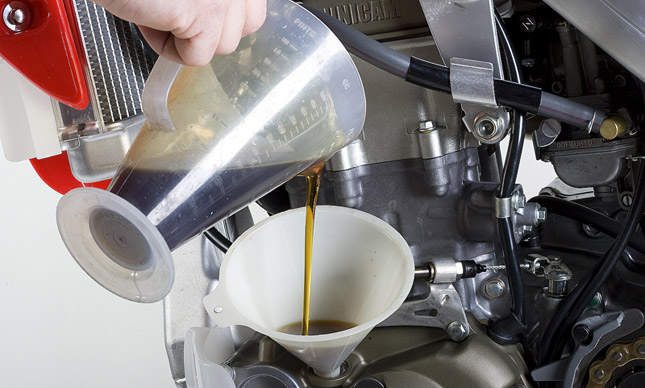 Engine Oil Change/ Top-up:
Engine Oil Change/ Top-up:The engine oil for a bike is like "Blood" for human body, saying this I meant not to compare the anatomy of these two but to explain you the importance of the engine oil for an engine. The engine oil becomes further more important for 4- stroke engines as there is no 2T oil added in the petrol, therefore if there is lack of engine oil in the 4-stroke engine there is no additional lubrication system to support the engine as it is there in a 2-stroke engines, where we add 2T oil in the petrol to lubricate the piston.
If you ignore the engine oil either in quality or quantity, the result would be catastrophic for the engine of your bike. It is advisable to keep checking the level of engine oil in a regular interval, this you can do by removing the oil plug whereby there is a gauge attached to it.
Clean the gauge stick with the help of cloth and re-dip the gauge into the oil sump while standing your bike straight and stationary, when you take out the gauge you will see the oil on the gauge, if it is between the high and low mark on the gauge the oil level is just fine, if you observe the oil level little lower than the low mark then you need to top-up with the same grade of recommended engine oil.
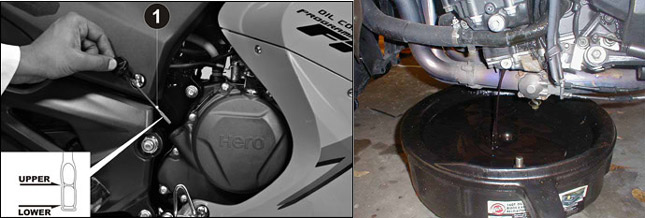 You need to look the quality of the oil as well, you can check it with the help of viscosity test that you can do by simply testing the viscosity of engine oil taken by same gauge. Just wipe the gauge stick with your thumb and finger and check whether it is fairly viscous or not. If the oil is no longer thick or the color of oil changed to somewhat brown black or simply the engine is outrun the kilometers specified by the manufacturer, its time to change the engine oil.
You need to look the quality of the oil as well, you can check it with the help of viscosity test that you can do by simply testing the viscosity of engine oil taken by same gauge. Just wipe the gauge stick with your thumb and finger and check whether it is fairly viscous or not. If the oil is no longer thick or the color of oil changed to somewhat brown black or simply the engine is outrun the kilometers specified by the manufacturer, its time to change the engine oil.Changing the engine oil is not a rocket science, you can refer to the service manual of your bike or if you inspect minutely you can locate a big bolt just underneath your bike's engine or placed at the side, all you need to open it with proper wrench and by placing tray of some sort of tub to collect the drained oil. After removing the oil get that big bolt tight again and then open that same plug which was used to check the engine oil level and pour the recommended grade of engine oil into it. Start the bike and keep idling the engine for few minutes so that the oil reach-out to the every engine component, stop the engine and check the oil level one final time, if required top-up the level once again.
Spark Plug:
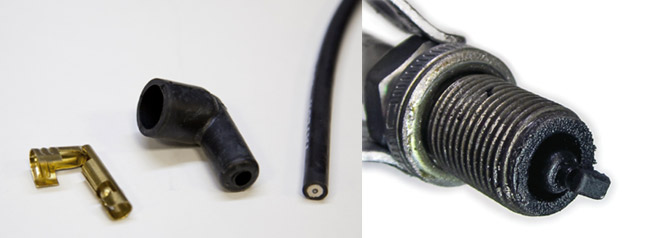 In the rainy season or after giving a pressure wash to the bike generally it is the spark plug and its lead which gives starting trouble, this is because either the insulation of the power cord/ lead gets breached by the water and caused the short circuit. The lead cap needs to be checked specially when the bike gets little older as it is exposed to the elements and tends to be broken leading to a short circuit.
In the rainy season or after giving a pressure wash to the bike generally it is the spark plug and its lead which gives starting trouble, this is because either the insulation of the power cord/ lead gets breached by the water and caused the short circuit. The lead cap needs to be checked specially when the bike gets little older as it is exposed to the elements and tends to be broken leading to a short circuit. Where as the spark Plug is something that is not required to change frequently, you can refer to the owner's manual book where there must be specified when exactly it is required to change the spark plug. Generally it is 25000 Kms to 30000 Kms when you need to change a spark plug, but you can not only change it but also check the gap and clean the carbon deposited at the spark plug.
The spark plugs used in the 4- stroke bikes are usually have longer life than the spark plugs used in 2-stroke engines, the reason behind this is the use of 2T oil in the petrol in case of 2- stroke engines, where this 2T oil reaches directly to the spark plug through petrol and air mixture and unburnt oil gets deposited at the Spark plug resulting into the Foul plug.
The spark plug needs to be unscrewed and screwed very carefully as it is mounted on the head of the engine which is either made of aluminum or some sort of alloy and are vulnerable to be broken. It is advisable to screw the spark plug first by the hands and then tighten it further just quarter turn with the plug wrench.
Battery:
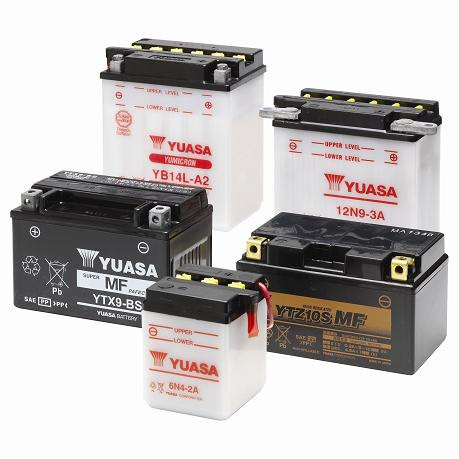 Batteries are the most neglected component of bikes, normally situated underneath the seat or inside the side panel it is hardly ever taken out or taken care by the rider unless its gone weaker and eventually gone dead. Thanks to the only electric start options in motorcycles, now the scene is changing rapidly. With the increasing dependency on Batteries there is increase in the care of batteries seen now.
Batteries are the most neglected component of bikes, normally situated underneath the seat or inside the side panel it is hardly ever taken out or taken care by the rider unless its gone weaker and eventually gone dead. Thanks to the only electric start options in motorcycles, now the scene is changing rapidly. With the increasing dependency on Batteries there is increase in the care of batteries seen now. There are broadly two types of batteries available in the market, the little older bikes come with the conventional batteries which needs to be topped up with the distilled water when acid level gets lowered, while the latest bikes come with maintenance free dry type batteries.
The conventional battery needs to be carefully removed from the clamp and should be placed at the even surface to check the acid level, if the level is below minimum mark then the battery should be topped up with the distilled water to the appropriate level and it must be charged fully with the help of battery charger before placing back to the battery rack.
Whether it is the conventional battery or the modern dry battery, one reason is common for the discharge/ not charging the battery and it is the corrosion of the terminals. The terminal of the battery needs to be greased properly to avoid the corrosion which is responsible for not charging the battery.
One precaution should be taken prior dealing with the battery and that is never ever touch both the terminals together.
Chain Tension & Lubrication:
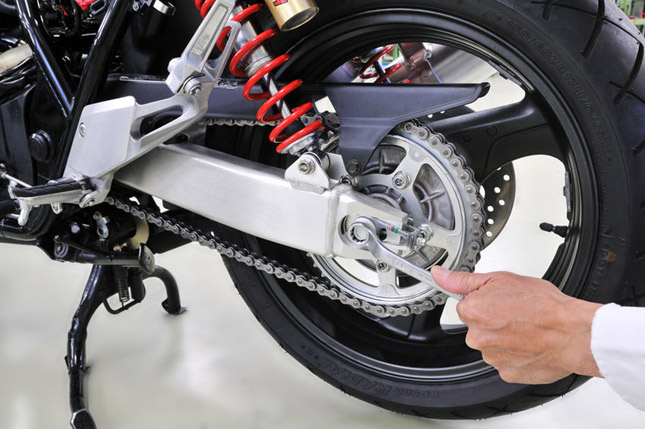 While few motorcycles come with full chain cover to give maximum protection from dust, filth and other climatic hazards, other comes with sporty half chain guard or entirely exposed chain. The exposed chain on one hand is easy to maintain as there is barely any cover to remove to do the service on the other hand the exposed chain is the major cause of its maximum service attention required.
While few motorcycles come with full chain cover to give maximum protection from dust, filth and other climatic hazards, other comes with sporty half chain guard or entirely exposed chain. The exposed chain on one hand is easy to maintain as there is barely any cover to remove to do the service on the other hand the exposed chain is the major cause of its maximum service attention required.The chain needs to be cleaned and lubricated with the branded products available in the market. It should be done on the regular basis, never ever apply grease on the chain.
The incorrect chain tension is another important aspect related to the chain of motorcycle. There should be correct tension in the chain, it should neither be tight nor it should be loose. Generally the chain has a tendency of getting loose while running over a period of time. You can refer your owner's manual to adjust the chain tension.
The incorrect chain tension can result snatchy gear shift, rough ride, premature gearbox and sprocket wear and tear. It is recommended to tighten your chain while some payload on board preferably someone sitting on the rear seat as the chain has a tendency to get tightened when pillion on board.
Tyre Pressure:
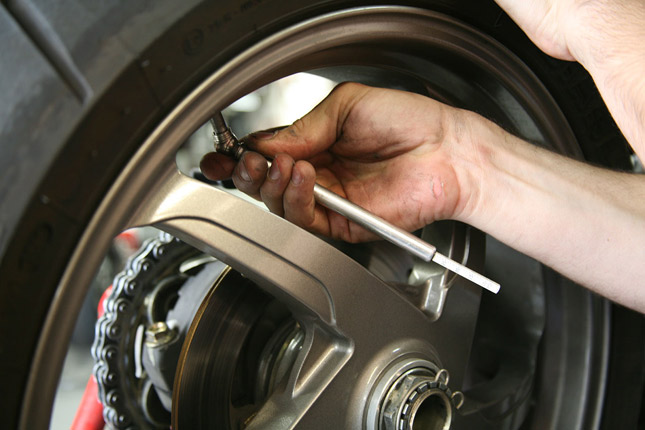 The tyre pressure is also one of the most ignored elements of biking, when was it the last time you checked the tyre pressure of your bike?? While it should ideally be every week you should check the tyre pressure, we generally ignore it for weeks. The tyre pressure has a direct affect on the handling as well as braking of the bike, the under-inflated tyre returns not only poor fuel economy but also results into bad handling and poor braking.
The tyre pressure is also one of the most ignored elements of biking, when was it the last time you checked the tyre pressure of your bike?? While it should ideally be every week you should check the tyre pressure, we generally ignore it for weeks. The tyre pressure has a direct affect on the handling as well as braking of the bike, the under-inflated tyre returns not only poor fuel economy but also results into bad handling and poor braking.The over-inflated tyre on the other hand also caused the poor handling and braking as the contact point of the tyre gets reduced with road.
There is specified pressure mentioned for different types of tyres for different bikes, you can either check those specified tyre pressure from the owner's manual or generally that information is mentioned on the the chain cover or the swing arm of your motorcycle.
Always remember to check the tyer pressure when the tyres are at the cold state to get the accurate pressure. The tyre pressure of your bike is tend to increase automatically in summer season as the air expands at high temperature this is the reason why it is recommended to check the tyre pressure when the tyre is at coldest possible state.
By: Farhan Kashif





